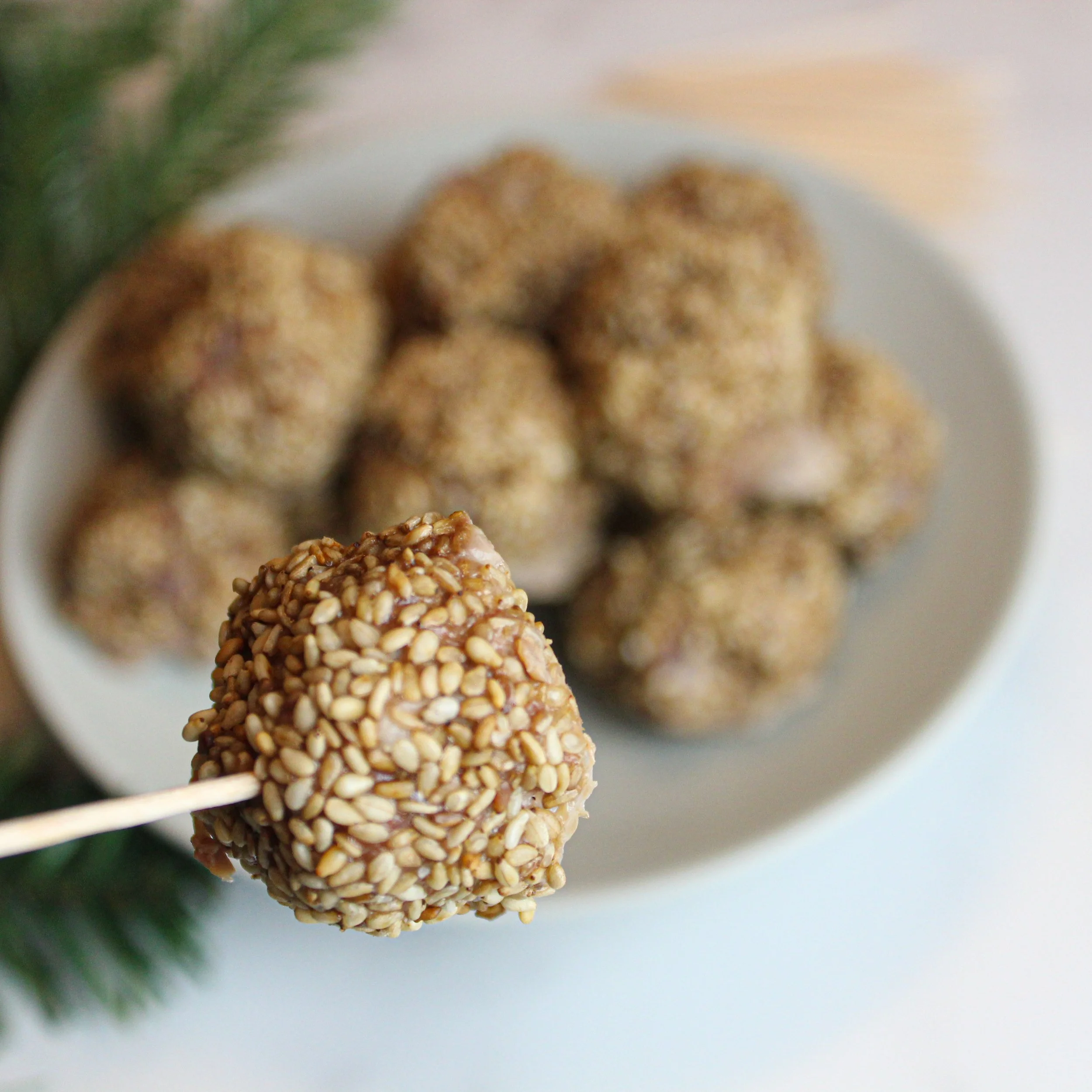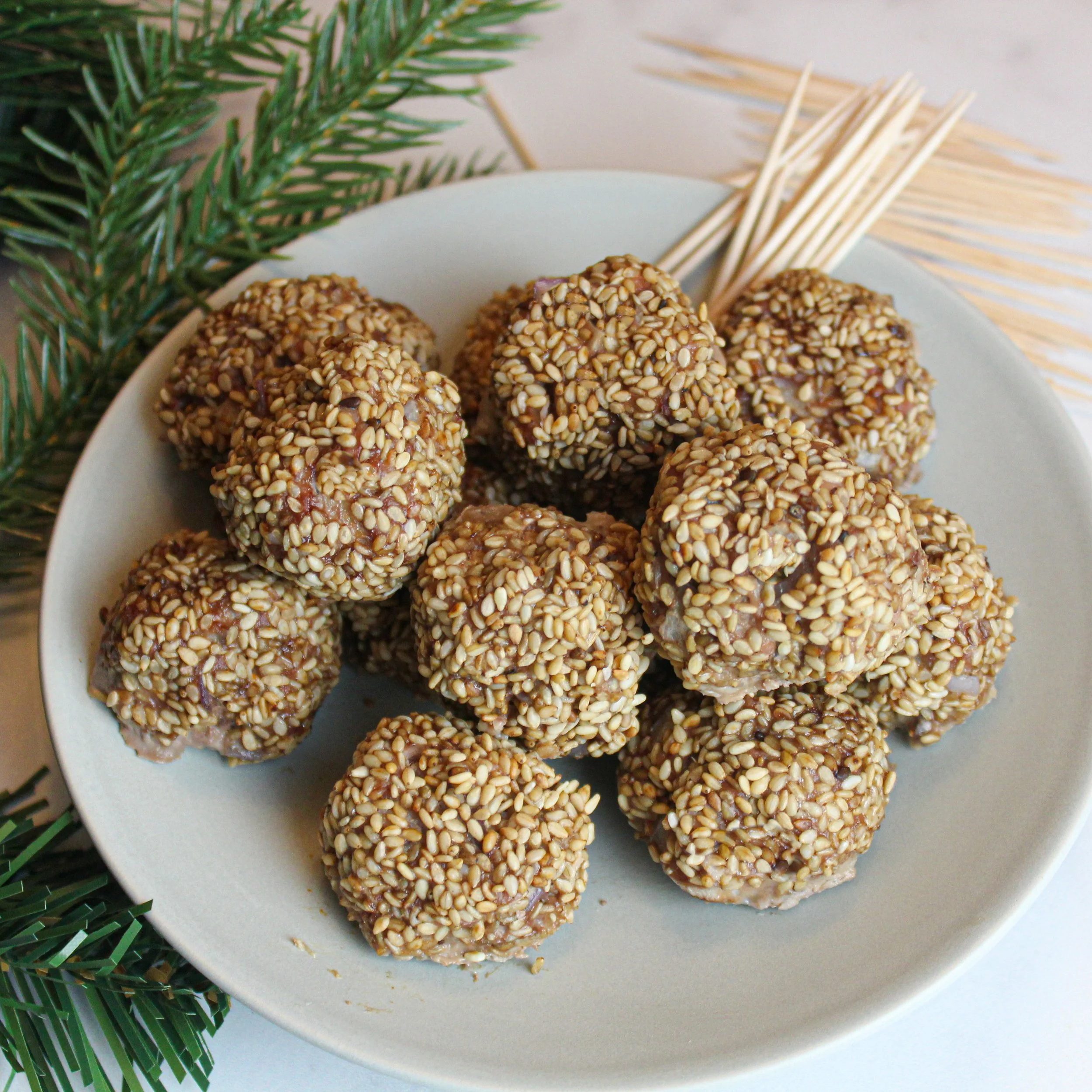As the team behind PrimaFoodie, it is our job to create, eat, and advocate for good health. But we'll be real (as we always are with you): Even as self-described food warriors, we need extra self-restraint and planning to stay feeling good this time of year. Between the hectic travel and parties to all the foods and hosting house guests (who drink your coconut water!), the holidays feel like they were made to knock all of us off our protocols.
But they don't have to. With a little planning and a few extra tweaks, we stay healthy—and on track—this time of year. Here are the 11 wellness-focused holiday tricks we swear by, hoping it will help you, too.
#1 prep for success
“It really comes down to prep, which it always does. We always have tons of fresh veggies and fruits stocked. Just the other day, we bought some great fresh carrots, sweet bell peppers, and celery from the farmers’ market, cut them up, and put them in water in mason jars to keep them fresh in the fridge. This way, they’re always ready to bring out for people to munch on—and people always do!” —Nichole
#2 be vocal about sugar
“It’s wonderful to have grandparents and extended family who want to shower your children with candy and other sugary treats. But this can be a challenging part of the holiday season for a family that tries to avoid sugar and processed foods. Talking to family ahead of time is essential. At the very least, I let them know treats can happen only after eating a balanced meal with protein and good fiber.” —Adrienne
#3 be smart around the booze
“Numerous studies show that alcohol and drug use spikes during the holidays, and the reasons are as wide as they are many, including social stress, anxiety, expectations, and the increase of drinks served. It can be a tough time of year, and depending on someone's relationship with alcohol, the holidays may require emotional support. Considering this, limiting the number of drinks to one a night or opting for alcohol-free cocktails and wine can also be helpful. Thankfully, there is a bevy of "non" wines and beers out there that contain zero-alcohol and no added sugars. I was just in Dublin and learned that Guinness 0.0 is a big thing there!” —Stacey
#4 record an encouraging voice note
“I learned this tip from a brilliant therapist: You can record a voice memo from your wise, mature self to listen to when you're in a charged or stressful situation. The therapist suggests this for going into a tough family setting during the holidays. You pre-record something like, ‘I know Uncle Bob is being tough, but I see you, and I know you got this,’ which you can then listen to quietly in the bathroom or on a walk. You can also do this when it comes to staying healthy during the holidays. Recording a voice note that says, ‘I know all that fried holiday food looks incredible, but think of how you'll feel in an hour…’” —Stacey
#5 stay committed
“So many things can get kicked aside this season. When I remain steadfast and committed to my workouts, I stay clear-minded this time of year. So no matter what—whether our house is bustling with company or we have chaotic schedules—I show up for my workout. It boosts my serotonin and puts me in a grounded, balanced, strong state.” —Nichole
#6 keep water in sight
“Holiday traveling, moving around, and hosting always distracts my attention from staying hydrated. (Too many great holiday days have ended with a dehydration headache.) Now, I always have my water bottle filled nearby or a fresh glass of water in my hand. This is the case at parties, hosting dinners, going to shows, and the like.” —Stacey
#7 always eat breakfast
“The classic holiday hustle can be a whirlwind. Visiting people and commuting from house to house and holiday parties can be exhausting. Prioritize eating a solid breakfast to help you stabilize hormones, social anxiety, and holiday grumpiness.” —Adrienne
#8 prioritize rest
“So many of us let parties and obligations fill our vacation days, when so many of us really need more rest and sleep. Don’t let FOMO get you. Say no to some events and take a day or two, with nothing on your calendar. Doing this helps recharge from all the holiday socializing—and it's even more critical for us introverts.” —Adrienne
#9 don’t let airport food get you
“A weakness of mine used to be airport food. The salty chips and vendor entrees marketed as "salads" always got me—and I paid for this once I arrived at my destination. No more. I pack all my snacks so they're ready in my travel purse, and if I do get hungry at the airport or want to munch on something different, I follow a hard and fast rule: only fruit purchased in the airport.” —Stacey
#10 set intentions
“We all know the track record for New Year resolutions. Most resolutions fall by the wayside come February. However, I believe setting an intention for 2024 or writing down some new affirmations helps to create a fresh start in the new year. To be less of a consumer, this year, my affirmation is “At this moment, I have everything I need.” —Adrienne
#11 Lean into a quick workout
“The holidays are always when I let my fitness routine fall to a low number on my list—I wish I were as dedicated as Nichole! But I learned from my friend Camille to embrace the shorter workouts this time of year. For me, even leaning into a 10-minute online Pilates or Barre class, or even a walk, helps. It doesn't have to be all or nothing—and I've learned this quick 10 minutes, even though it's not my usual long workout, keeps me feeling really good.” —Stacey
#12 eat ahead
“I always eat before gatherings, such as cocktail parties where there's often a focus on hors d'oeuvres, buffet foods, and alcohol. This way, not only do I avoid the stress of playing Russian roulette with dietary triggers such as gluten, but I also get my protein and good nourishment first. Any choices I want to make after are fine, but at least I'm deciding from a sated, clear-headed place, not a hangry, desperate one.” —Nichole












